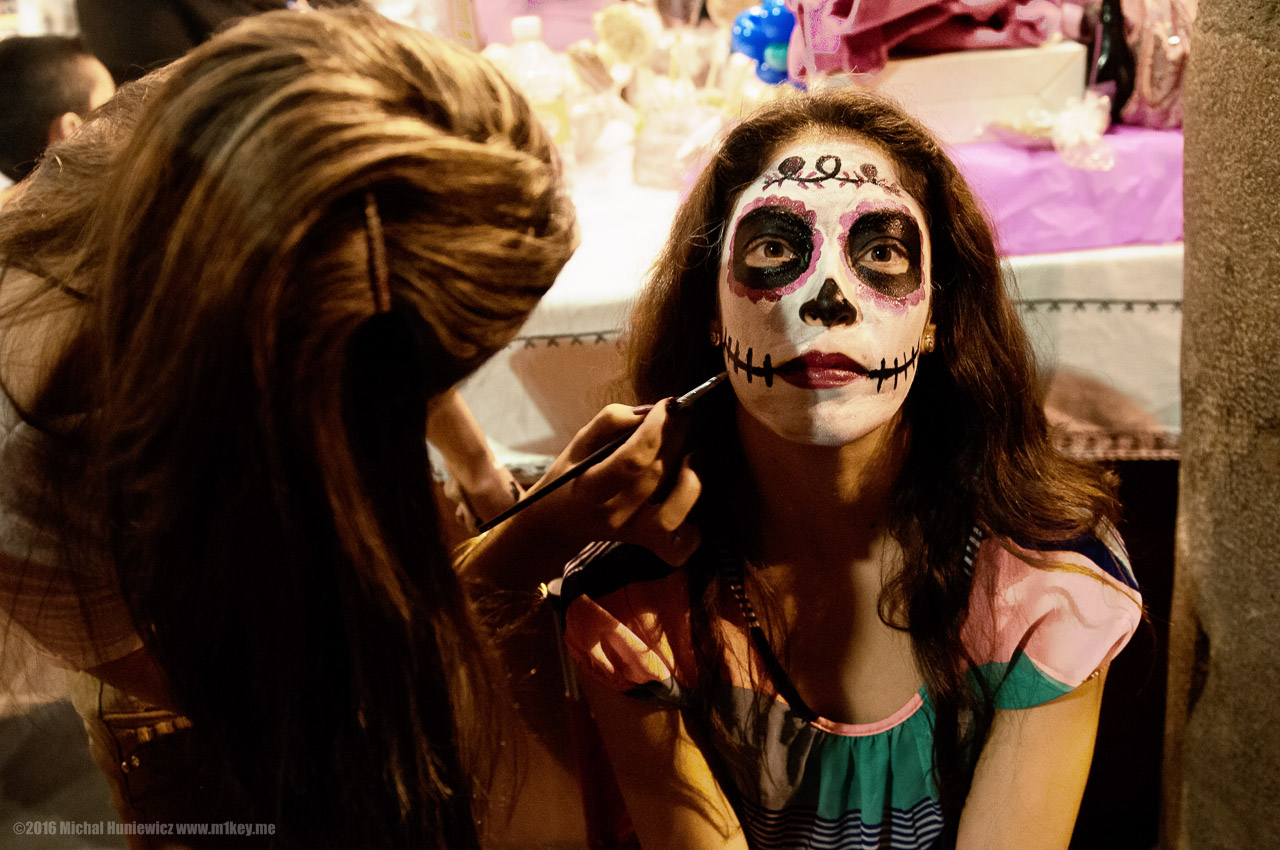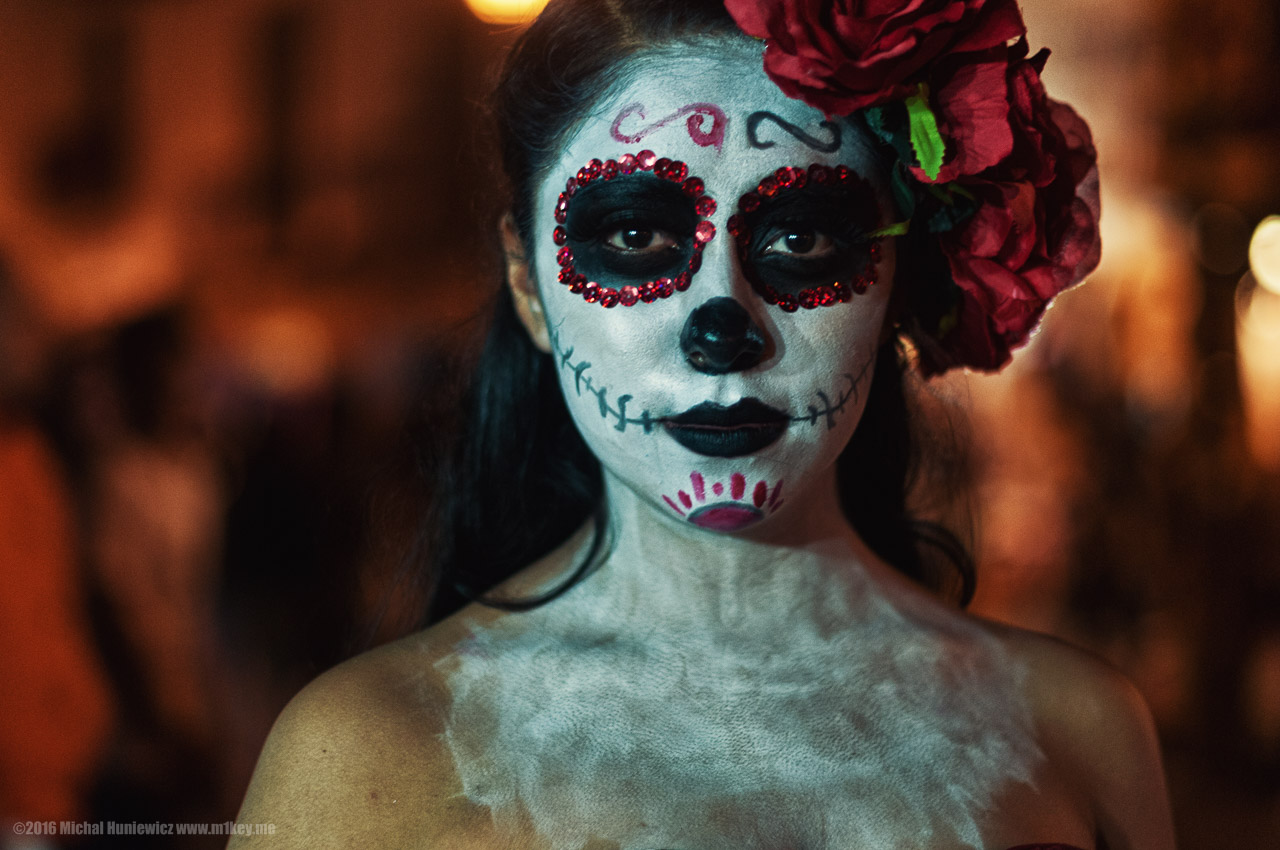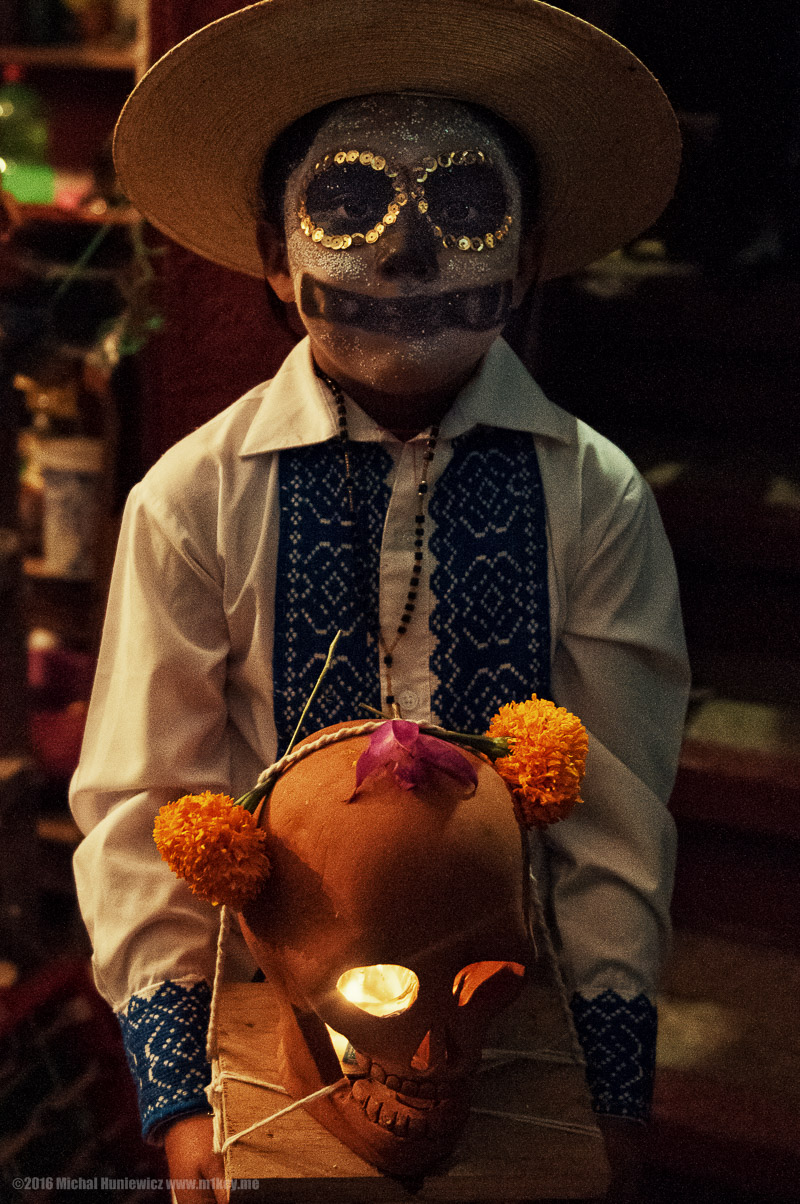Día de Muertos Photography - M1key - Michal Huniewicz

Between 31st of October and 2nd of November every year, Mexican people celebrate Día de Muertos - the Day of the Dead. They remember and pray for their deceased family members in order to support their spiritual journey. They offer their favourite food, all of which is not that different from the Hindu beliefs, where rice balls are provided for those travelling on the other side.
If you'd like to find out more about Mexico first, may I recommend my Mexico - Assorted gallery?
If you liked this gallery, you can follow me on Twitter or Facebook, or Instagram, much appreciated.
La Calavera Catrina

On the days before and during the Día de Muertos (also incorrectly called El Día de Los Muertos), many people wear Day of the Dead makeup, which is linked to La Calavera Catrina, an early 20th century etching being a parody of Mexican natives that aspired to be like Europeans. [1]
ISO 200, 50mm, f/1.4, 1/320s.
Calaveritas

All of Mexico (this photo was taken not far from Chichen Itza) was full of similar Day of the Dead merchandise, some of which is available internationally as well, for instance in the Parisian Catacombs souvenir store. At the airport in Mexico City, I found very high quality and very expensive Catrinas, though, which I think were quite unique.
ISO 200, 56mm, f/4.5, 1/160s.
Bus to Pátzcuaro
Petrol Station Girl

Apparently, most scholars recognise the Mexican Day of the Dead as a fusion of Aztec beliefs and Christian beliefs brought by the Spanish. [2] I was told, however, that this was a misconception, and that these traditions and beliefs were in fact purely Christian. [3] The literature the person suggested to me was only available in Spanish, so I could not get properly acquainted with it, and have no opinion.
ISO 200, 29mm, f/2.8, 1/400s.
Baby Witch
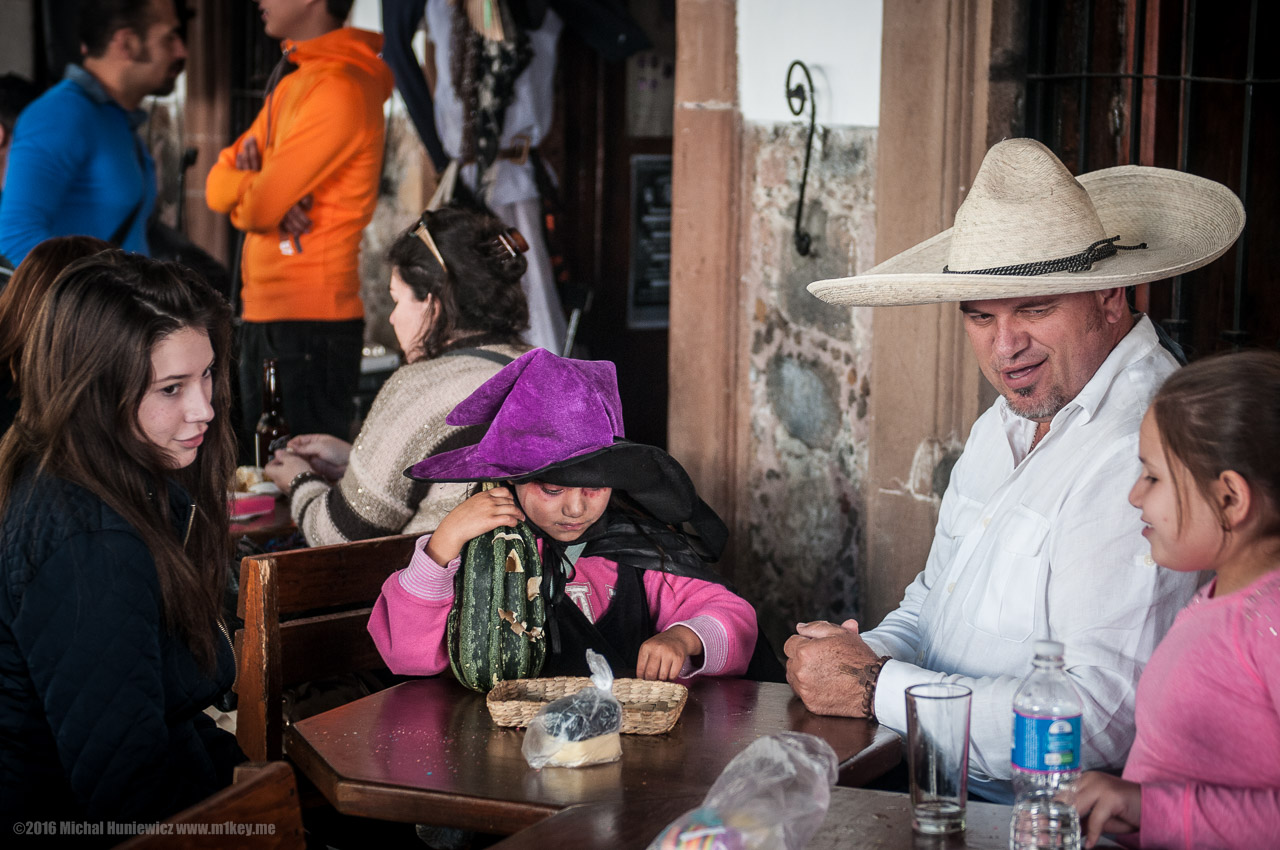
It is a fact though that the Christian Church originally rejected this celebration, and recommended the traditional All Saints' Day instead. [2] Theyt failed, and the two have merged, as it was also the case with Kupala Night and Feast of St. John the Baptist in Poland.
ISO 220, 50mm, f/2.8, 1/40s.
Olivia

In the north of Mexico, this holiday wasn't such a big deal, as Christian influence was stronger, and Mesoamerican influence was weaker. However, in the 1960s the government "introduced this holiday as a unifying national tradition based on indigenous traditions". [2]
In the photo, my friend Olivia.
In the photo, my friend Olivia.
ISO 200, 24mm, f/4.0, 1/800s.
Girls in a Church

It is not easy to tell which bits of the tradition are Aztec, and which Christian, as for example festivals and parades are part of Spanish culture.
ISO 640, 24mm, f/2.8, 1/40s.
Pixya Graveyard
Metal Coffin

Here, the dead are buried for one year, then dug up, then stored in those small metal coffins after their bones are washed.
ISO 400, 24mm, f/3.5, 1/40s.
Skulls

Which was described to me as a Mayan custom (by my guide). However, the symbols are Christian.
ISO 400, 24mm, f/3.5, 1/25s.
Skull in a Wall

This skull was simply stored in a niche in a wall.
ISO 50, 5mm, f/2.0, 1/125s. Phone photo.
Baby Skeleton

Regardless, the original celebrations took place in August, lasted for a month, and were dedicated to the local goddess of death, Mictecacihuatl, perhaps corresponding to the modern la Calavera Catrina. [2] We're talking 2,500 - 3,000 years ago.
ISO 800, 24mm, f/2.8, 1/40s.
On Stilts

A recent development is that deceased children are commemorated on 1st of November, and adults on 2nd.
In the photo, stilted figures walking across the market.
In the photo, stilted figures walking across the market.
ISO 800, 24mm, f/2.8, 1/40s.
Oli's Makeup
Janitzio Graveyard

The Janitzio Graveyad was massively overcrowded during the Day of the Dead. I was wondering what the local people thought about it (should have asked...).
ISO 1800, 24mm, f/2.8, 1/50s.
Anabel & Olivia
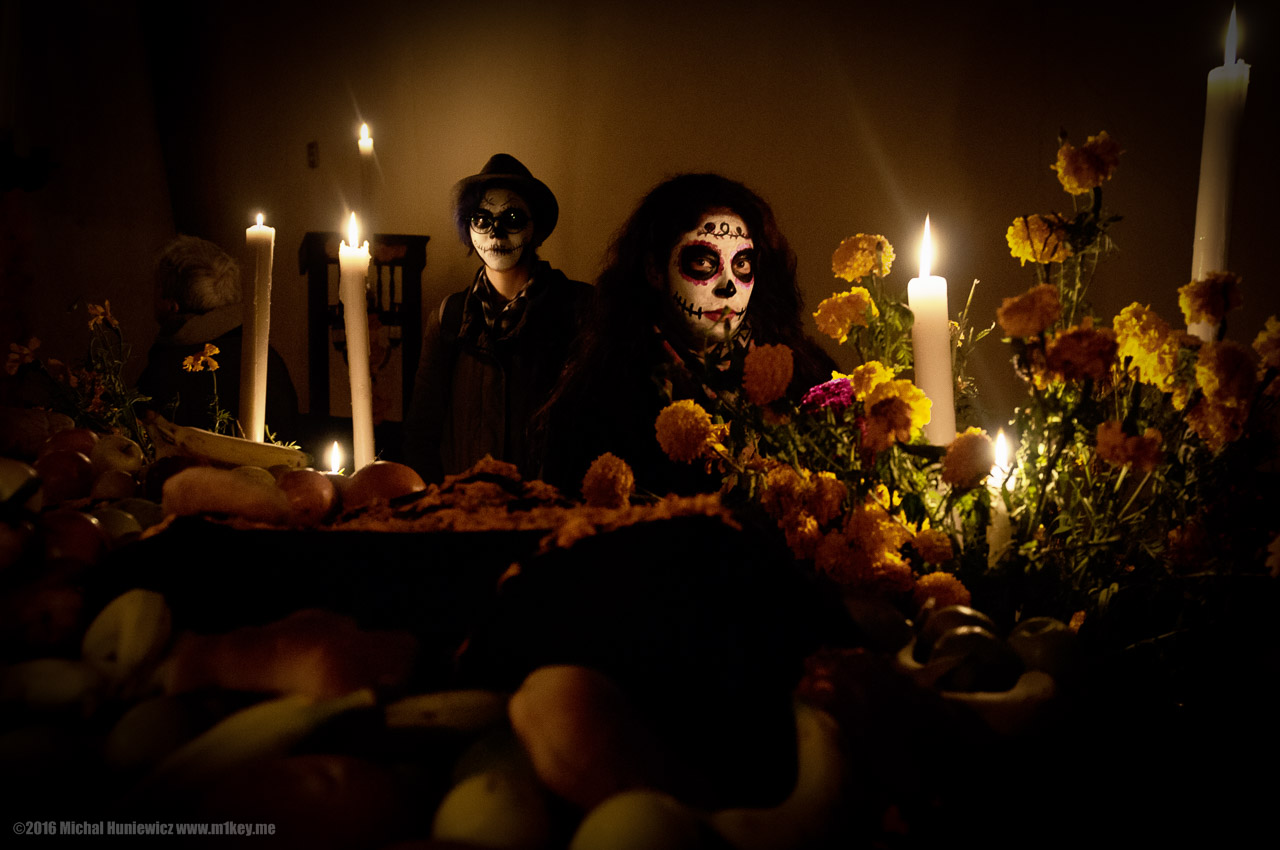
Altars like this one are built upfront to invite the dead children (angelitos) and adults to visit us.
In the photo, my friends, Anabel & Olivia.
In the photo, my friends, Anabel & Olivia.
ISO 640, 24mm, f/2.8, 1/30s.
Decorated Grave

Celebration are not always meant to be sad. Sometimes, humorous anecdotes about the dead are recalled.
In the photo, a decorated grave - notice pan de muerto, the bread of the dead; it's delicious.
In the photo, a decorated grave - notice pan de muerto, the bread of the dead; it's delicious.
ISO 3200, 24mm, f/2.8, 1/30s.
Pátzcuaro Square
Food

People eating food brought to the graves. The flowers you see in these photos - that's Mexican marigold, or cempasúchil, or flor de muertos - flower of the dead. [4]
ISO 1100, 24mm, f/2.8, 1/30s.
Robes
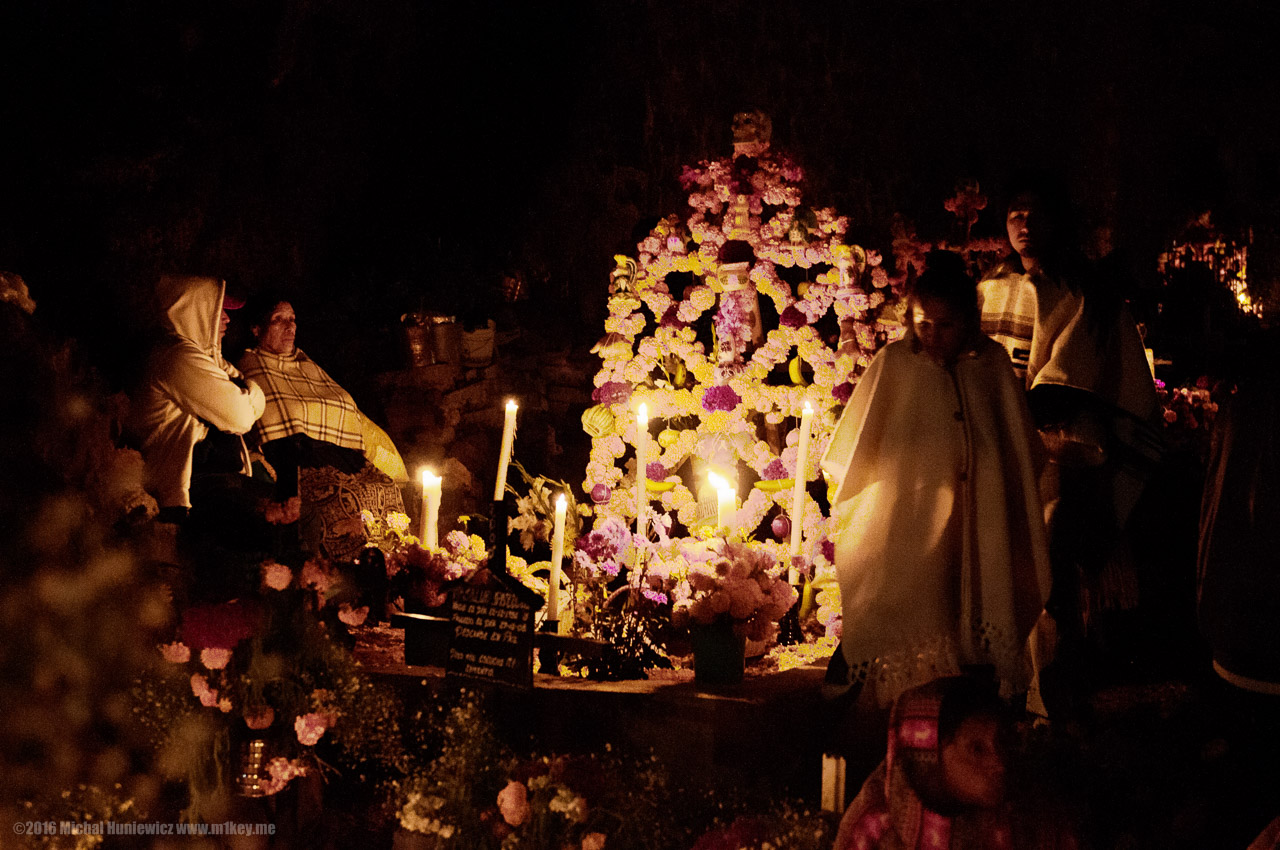
There is a custom where Mexicans write mocking epitaphs for their friends. This is often described as Mexicans laughing in the face of death. The aforementioned scholar that argues the celebrations are not Aztec in character, supposedly believes there is nothing humorous in the original beliefs.
ISO 1400, 36mm, f/2.8, 1/30s.
Grave of a Child
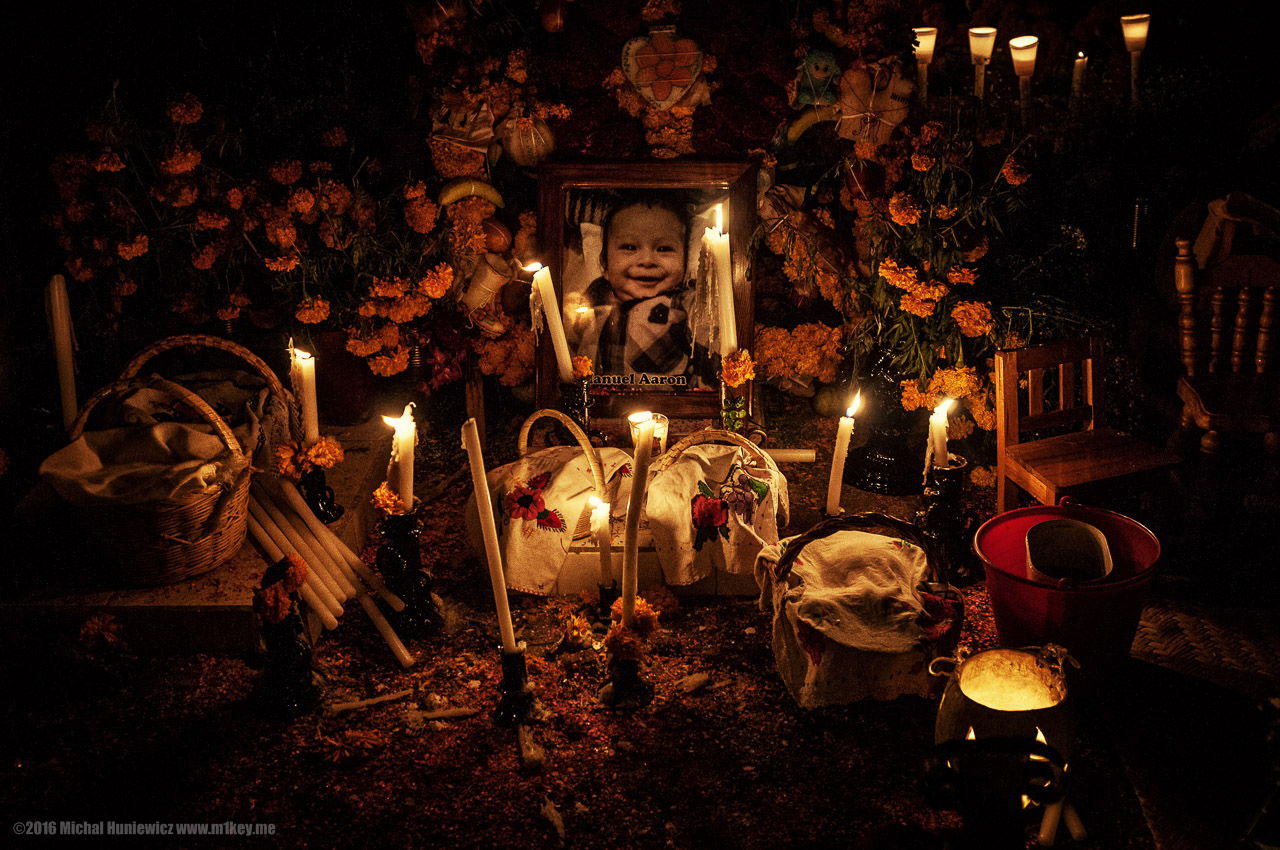
Grave of an angelito. There are toys and little chairs.
ISO 720, 24mm, f/3.5, 1/30s.
Vigil

This picture is taken in Pátzcuaro, one of the top locations for the Day of the Dead (and so very busy). The customs here are a bit different in that the inhabitants ride winged boats around the island on the Lago de Pátzcuaro.
ISO 3200, 60mm, f/2.8, 1/30s.
Boy with a Skull
Grandma
Man in a Hat
Grandma
Olivia at a Graveyard

Olivia at a graveyard at San Andres Mixquic graveyard.
ISO 1600, 50mm, f/1.4, 1/50s.
Skully
Lollipop
Shantal
Blink Already
Candle

In the town of Ocotepec, visitors are invited inside houses to admire the altars, and they are expected to bring candles in return. [5]
ISO 200, 50mm, f/2.0, 1/60s.
Skeleton

A Skeleton, saying goodbye to those leaving the Mixquic graveyard.
ISO 1600, 50mm, f/1.4, 1/50s.



